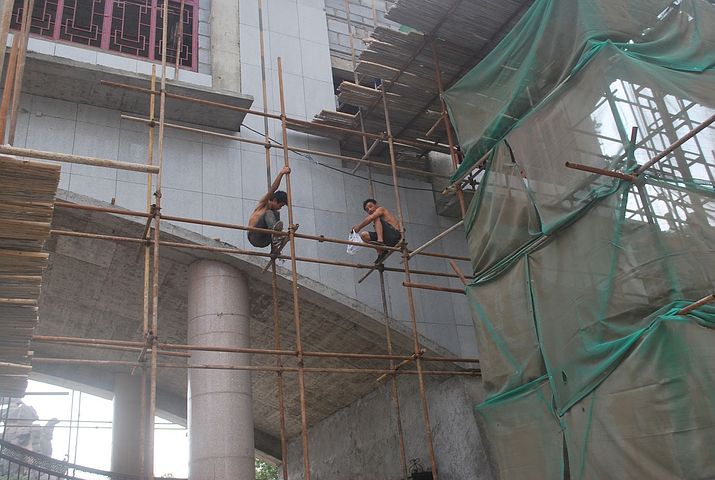
When Scaffoldings Should Be Classified As Dangerous
Scaffoldings are fundamental to allow a professional construction or development project take place within the appropriate timeframe and budget.
Whereas ladders can struggle to get the job done without offering a safe degree of support, these items allow practitioners to maneuver through intricate settings and scale great heights.
However, injuries, accidents and deaths continue to occur on work sites all across Australia on an annual basis.
Specialists can undertake their research to investigate each matter individually, but they are regularly a result of failing to classify a dangerous situation.
Let us explore what these examples could look like from a practical point of view.
Overloaded With Weight
Buckling under the weight of foot traffic, debris, bricks or heavy power tools can compromise scaffoldings that were safely erected. Each plank and designated area will have their own unique stipulations as to the loading parameters, and going over these marks will cause the structure to bend and break. The general consensus will see a scaffold be able to hold four times its own weight at any given moment, but this can change depending on the nature of the material. Some lightweight synthetics are ideal for simple installation, but can cause trouble when carpenters, plumbers and builders decide to carry added equipment or shift loads that were not calculated.
Lack of Multiple Access Points
To avoid suffering from a bottleneck effect when erecting scaffoldings, multiple access points are necessary on extensive building projects. For modest endeavours with a single home carpenter, a single access point maybe necessary. However, with multiple team members synchronising their efforts to maneuver from one section to the next or one story to the other, being able to enter and exit a scaffold is paramount to providing a safe environment.
Unsafe Surfaces
In cases where the walking planks are littered in mud and debris or exposed to sleet, snow or ice, that is a situation where scaffoldings become a workplace hazard. Slips and falls constitute the overwhelming majority of reported accidents and injuries on site, and rarely will there be a surface that was not compromised in some shape or form. Any area that requires foot traffic should be cleared of any hazards, including rubbish loads or debris that is left unchecked, forcing professionals to walk over or around impediments.
Lack of Protective Measures
Professional building and development teams cannot utilize scaffoldings completely in isolation. These are structures that require guardrails to prevent falls and points to tie ropes or cords accordingly. This is especially the scenario with items that are erected at a significant height up multiple stories. The greater the height and potential fall, the more safety measures have to be implemented to insure against accidents.
No Worker Training or Industry Oversight
We can continue to talk about physical or logistical issues with scaffoldings that classify them as dangerous, but there are human elements that are at play with these structures. Employee training through education schemes is fundamental because a lack of knowledge or awareness will lead to problems happening on site. Builders and their apprentices have to be an example to their peers and adhere to safe practice, regardless of the size or scope of the project. The same can be said for independent third party oversight conducted by an industry peer. Perhaps arriving as a representative from an association body, these operators will be able to offer a report and analysis on the safety levels or present dangers of the scaffold.
Summary
Scaffoldings don’t have to be dangerous structures that cause workplace accidents. Yet they will continue to be if those participants do not undertake their due diligence and enact oversight on their professional practice. This is a domain that requires commonsense and respect for the potential dangers that can easily emerge.
